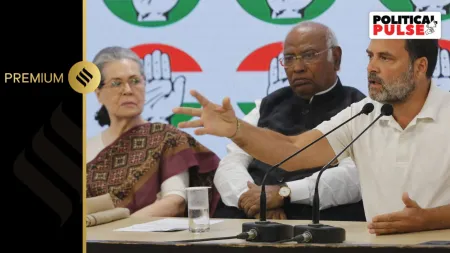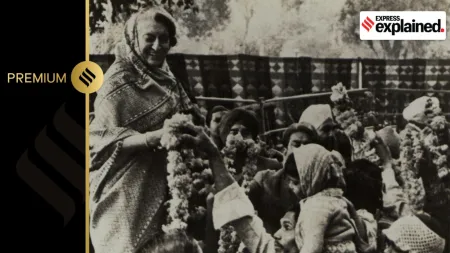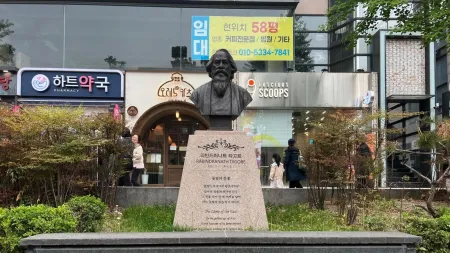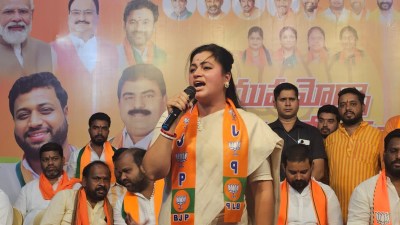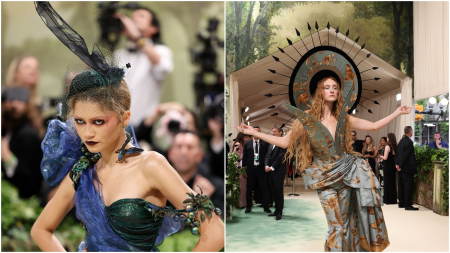- India
- International
In an antique land with Jayanta Sengupta
The curator of the Indian Museum, Kolkata, on his relationship with the past, and the stories he wants to tell through ancient artefacts.
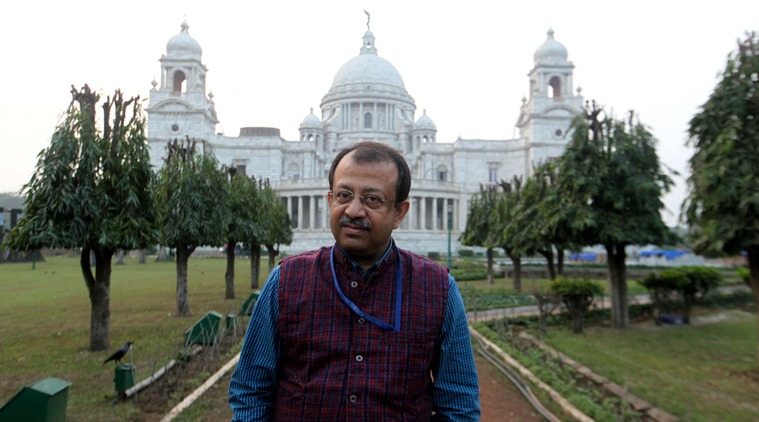 Curator Jayanta Sengupta at the Victoria Memorial Hall in Kolkata, (Photo: Subham Dutta)
Curator Jayanta Sengupta at the Victoria Memorial Hall in Kolkata, (Photo: Subham Dutta)
Jayanta Sengupta is running against time. The man in charge of two of India’s most celebrated museums, Indian Museum and Victoria Memorial Hall, Kolkata, has three meetings scheduled one after another in an hour. His office at the outhouse of Kolkata’s most recognised landmark, Victoria Memorial, is buzzing with people. But his chamber, a 10×10-foot room surrounded by elegant bookcases is a cosy sanctuary smelling of tea and old books. “I have a strange relationship with time. I guess all historians do, we see time as a map where stories are plotted,” says Sengupta, who taught history at Jadavpur University and the University of Notre Dame, Indiana, US, before taking over as the curator of Victoria Memorial Hall in 2012 and the director-cum-head curator of the Indian Museum about a year ago.
As a boy growing up in Katwa, a small town about 100 miles away from Kolkata, Sengupta, 52, wasn’t aware of the historical import of the place. “This was where renowned Bhakti saint Chaitanya Mahaprabhu, who inspired ISKCON, took his vows sometime in the 15th century,” says Sengupta. All he knew was that he needed to get away from the place and make a life in Kolkata. “Unknowingly, I was being a part of the cultural history of Bengal and India. I call it the Apu syndrome. The protagonist in Ray’s Apu trilogy, like us, was lured by the prospect of post-independence urban India. We need to read about the story of this migration in our textbooks, we need to see this in our museums,”
says Sengupta.
But what does a museum mean to a curator? “In this day and age, a museum cannot be a passive storeroom of dead objects. We need to make it interactive and entertaining. History is about telling stories, when you write a history book, you have the luxury to tell a story through a detailed narrative. But a museum differs from a textbook. Let’s say we are trying to talk about the statue of the dancing girl of Harappa. A good curator will tell the story of the Harappan civilisation, the socio-economic position of women and then contextualise it in respect to the history of modern India through a display,” says Sengupta.
The Indian Museum can be both a curator’s dream and nightmare, says Sengupta. The intimidating white structure that dominates Chowringhee Road in central Kolkata is just one part of the museum; it has a sprawling complex behind the outer building. It’s easy to lose oneself in its labyrinthine corridors but really hard to make sense of the way most displays are arranged. Most seasoned travellers believe that the Indian Museum has the potential of being a better experience. “We have worked on the displays in the past year. We have tried to do justice to the museum’s staggering collection,” he says.
Does the curator of a museum also have the luxury of choosing which stories to tell and which to skim over? “That question has many answers. In the Mughal section of the museum, will I choose to hide the fact that Aurangzeb destroyed many Hindu temples just to ensure that no religious sentiments are hurt? No, as a historian I have to tell stories truthfully, but I will also have to highlight the fact that Aurangzeb also destroyed many mosques. His intention was not to establish religious supremacy but to punish rebels,” says Sengupta.

When Sengupta took over the reigns of Indian Museum, he had his task cut out. The museum, which is celebrating its bicentennial year, was reeling under a controversy about misappropriation of funds. “I knew my task was to tell stories in an entertaining manner. And that’s what I focussed on,” says Sengupta. One of the problems he faces while curating the staggering 1.5 lakh artefacts in the museum is to choose what to display. “The Indian Museum displays only 6 per cent of its collection. British Museum displays even lesser, 5 per cent. There is simply not enough space to display our complete collection,” says Sengupta.
Apart from the permanent displays that each museum has, most items are displayed on rotation. The norm across the world is one year on display followed by three years in storage. In Indian Museum, the stay in storage is way longer, says Sengupta. As a result, the storage room of the museum is probably its most important section. “Most museum workers spend a large part of their time at the storage units. Of the Rs 100 crore grant we received, most of the money will be spent on upgradation of our storage facility,” he says.
The two museums he is responsible for are both crowd-pullers for reasons different from a love for history. The grounds of Victoria Memorial are where young couples of Kolkata seek a few private moments and the Egyptian section of the Indian Museum is known to be haunted. Does he feel irked by that? “Actually, I have no problems with that. Louvre has a tradition of people proposing in front of their favourite painting. Why should we not encourage that here too? This is how people should engage with history, through their personal experiences,” says Sengupta.
More Lifestyle
May 09: Latest News
- 01
- 02
- 03
- 04
- 05


